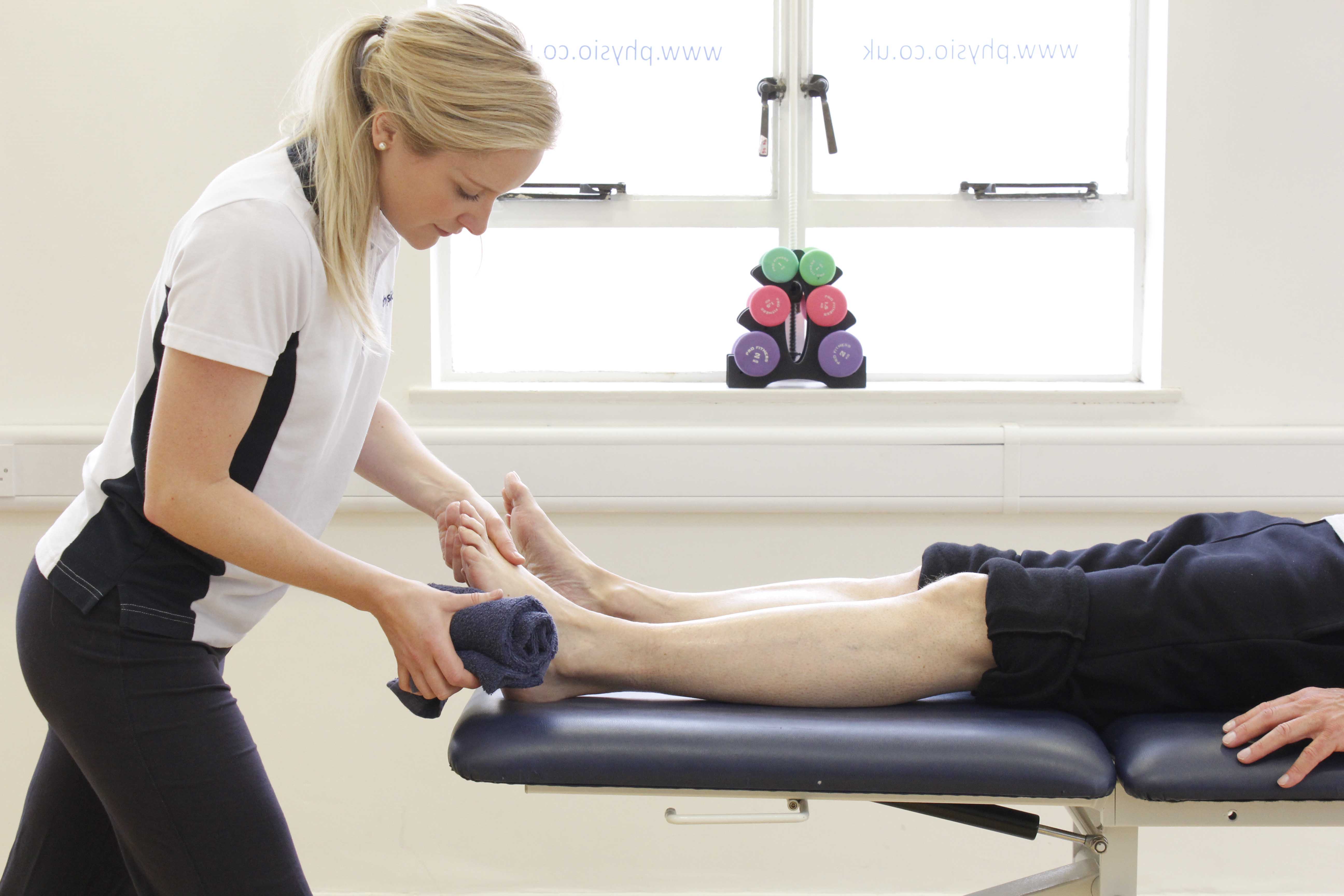A person who is hypersensitive responds more intensely, more quickly, and/or for a longer time to pain. Pain hypersensitivity may persist long after an injury has healed or occur in the absence of any injury which can have an impact on daily activities. On the other hand a person with pain hyposensitivity exhibits less of a response to sensory information, takes longer to respond to pain, or requires more intense or long-lasting sensory input before they are moved to action. People with hyposensitivity are also at risk losing their balance more easily and falling. Hypersensitivity and hyposensitivity often occurs secondary to conditions such as:
- Nerve Injury
- Whiplash
- Stroke
- Spinal Cord Injury
- Cerebral Palsy
 Above: Neurological physiotherapist conducting sensation normilisation exercises
Above: Neurological physiotherapist conducting sensation normilisation exercisesAt Physio.co.uk our physiotherapist provide specialised treatment for people with hyposensitivity and hypersensitivity. Treatment for hypersensitivity may include:
- Discussion of activities with the person and while engaged in activity/treatment reduce any anxiety.
- Slow and gradual introduction to sensory stimuli using a variety of sensory equipment. A selection of comfortable materials that the person can tolerate will be used including clothing, bedding, and towels.
- Practising activities in a variety of positions including sitting, kneeling, laying on stomach propped on elbows, sitting on a therapy ball.
- Relaxation techniques.
- Bombarding the affected area with sensory input and increasing awareness of body parts through sensory activities such as heavy lifting, use of exercise bands, or sitting on an exercise ball.
- Practising functional tasks to improve balance and coordination and reducing the risk of falling.
- Providing items for stimulation including stress balls.
- Relaxation techniques.
If you would like more information or to book an appointment please call Physio.co.uk on 0330 088 7800, or alternatively book online.

 0330 088 7800
0330 088 7800


































